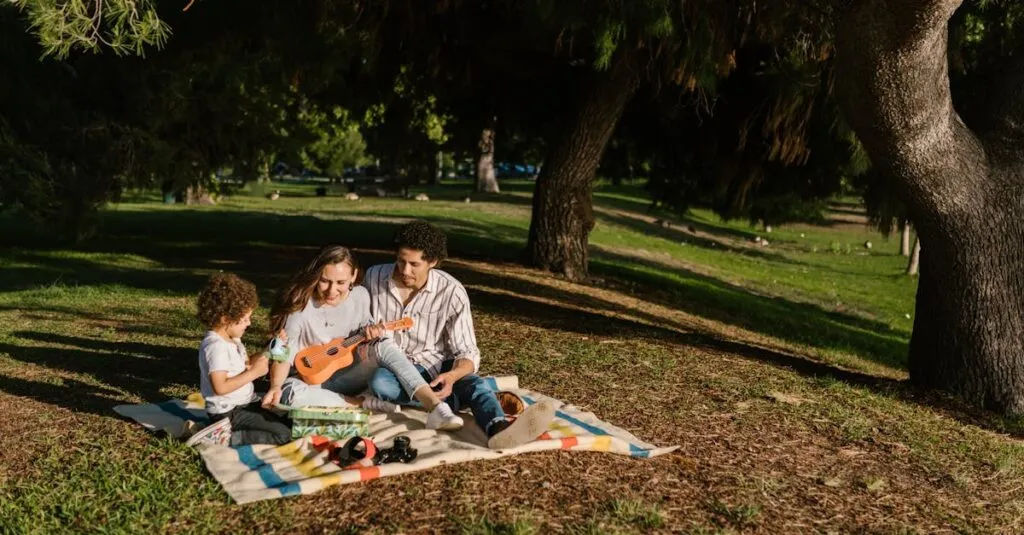Understanding Discipline: The Foundation of Self-Control
Discipline isn’t just about rules; it’s a foundation of self-control in preschoolers. It’s understanding one’s actions and their consequences. Start young for best results!
What Makes Children Tick?
You might wonder, what truly makes children tick? It’s immediate responses and relatable lessons. They resonate more with demonstration than with daunting lectures. You wouldn’t bark at a puppy to sit still without showing how, right? A relatable approach works wonders.
Encouraging Small Choices
Encourage small choices and cheer successes to harness that motivation. With the right encouragement, they’ll gradually learn the ropes. Keep the communication open, and let them learn from mistakes—after all, mistakes are the stepping stones to genius!

Key Takeaways:
- Start instilling discipline early for best outcomes.
- Use demonstrations rather than lectures to convey lessons.
- Encourage small, manageable choices.
- Maintain open communication and embrace mistakes as learning opportunities.
Incorporating Fun into Discipline Practices
Discipline doesn’t have to be a dreaded chore. Spice things up by integrating play! Preschoolers adore fun, and it’s an efficient teaching method.
Think of a game where putting toys away earns superhero badges. It doesn’t only clear the mess but gets your tot flying high on joy and achievement. Meet their playful world with creativity.
Fun Techniques to Try
- Try shadow games for taking turns.
- Use ‘Simon says’ for focus.
Yes, the occasional quirk can turn discipline into an entertaining festivity rather than a monotonous drill. Plus, it promotes teamwork and social skills effortlessly.
Who knew discipline could be so lively?

Balancing Emotions: Managing Preschoolers’ Emotional Outbursts
Every preschooler experiences emotional rollercoasters—picture daily meltdowns over a broken crayon! It’s crucial to provide a good framework for emotional responses. Handling fits with patience; it’s less about rage and more about their evolving communication skills.
Helping them name their feelings can be like giving them superpowers.
“I see you’re mad, but it’s okay to be mad.” Emotions are the colorful spectrum they experience.
Techniques for Managing Emotions
- Teach them quiet time techniques.
- Introduce vibrant breathing methods.
- Brainstorm distraction activities together.
Yes, at times, a little humor can reset the storm. After all, it’s our giggles that help cool the heated tempers.

Practical Tips for Teaching Discipline
They’re watching you! Yes, those keen eyes notice how you manage your own discipline. It’s monkey-see, monkey-do. Living what you preach is crucial.
Try setting achievable routines like:
- Morning greetings with a smile
- Laying out tomorrow’s clothes in their own hands
Let them take charge and build habits they own. Avoid anchoring your instructions as demands. Instead, offer them as choices. For example:
“Blue shirt today or the dino one?”
This method fans the fire of making positive decisions. Small, gradual self-control builds up bravely over time!
Consistency coupled with communication? Your golden ticket.

Using Humor: Discipline Doesn’t Have to Be Dull
Injecting humor into discipline could be your secret weapon. Picture the chaos of a tiny human smearing spaghetti all over the walls. Would a stern frown solve it or ‘Wanna make it a noodle dance-off?’ At times, breaking tension with laughs can teach more effectively than a thousand rules.
When you drop the butter-covered piece of toast, laughing it off shows resilience. Humor is a celebration of imperfections. Kids learn from your lighthearted acceptance, not your wrinkle-forehead warning.
Share your goofiest blunders and giggles together—they’ll feel less condemned. Remember, a spoonful of humor helps the discipline go down.

Creating an Interactive Journey: Share Your Experiences
Your journey with discipline isn’t a lone road! Start a conversation with other parents. Share strategies, the good, and the silly. Sharing real-life stories adds personal growth and presents new solutions not found in textbooks.
Have an open arm for feedback. Invite questions and swap tales in the comment thread! It’s mesmerizing how common struggles build connections and support. For instance, ‘My kid hid my car keys in the cookie jar,’ could be the opening line of both a hilarious note and an insightful lesson.
It’s a community build-up—a tribe sharing the trials-and-tribulation sails of parenting. What’s your story?

